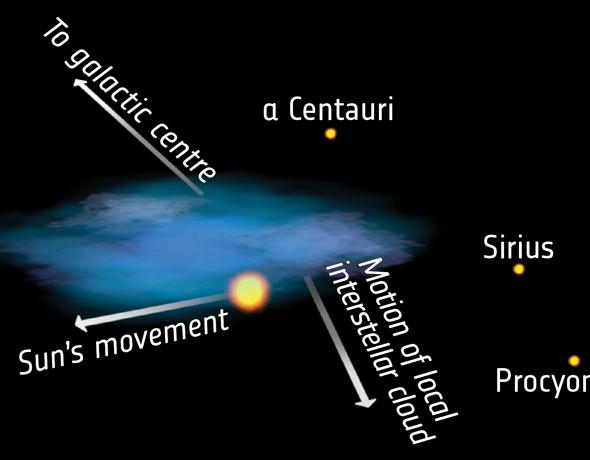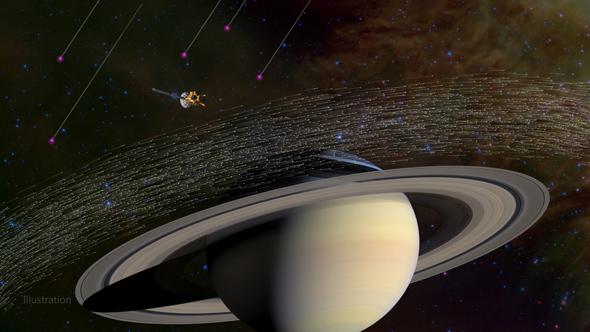The Cassini spacecraft is the size of a school bus and is loaded with all kinds of detectors to analyze the mighty planet Saturn, its atmosphere, moons, rings, and environment. Apropos of that last bit, one instrument, the Cosmic Dust Analyzer, was designed to let tiny grains of matter slam into it, so it can analyze their composition, mass, and even how fast they were going.
The CDA has sampled millions of dust particles that have flown into its maw, mostly ice and silicates originating from the moons around Saturn (most notably Enceladus).
But 36 of these dust grains stand out. Why? Because they came from interstellar space.
Yes, seriously: Cassini has detected grains of material that came from other stars!
These three dozen bits of cosmic detritus stood out from the millions of others due to their high velocity: They slammed into the detector at speeds of 20 kilometers per second, or 72,000 kph. That’s extremely fast, far faster than you’d expect any dust around Saturn to move. In fact, it’s well beyond the escape velocity of Saturn at the distance of Cassini, so it’s very, very unlikely they originated from there.
Also, the direction these particles came from was another tipoff. They came from the local interstellar cloud.
The Sun orbits the Milky Way galaxy on a vast circular path, taking roughly 240 million years to complete, even though it’s moving along its orbit at a whopping 200 km/sec. There are huge numbers of clouds of gas and dust orbiting the galaxy as well, and it so happens the Sun is in one now. It too is moving rapidly around the galaxy, in a slightly different direction than the Sun is. In the end, it and the Sun are moving relative to each other at a speed of roughly 20–25 km/sec.

ESA
Aha! That’s why scientists are confident the grains detected by the CDA aren’t from around here. Not only that, but they only see them when the CDA is pointed into the direction of the Sun’s motion relative to the cloud, when you’d expect to see more of them.
This is very cool; we get to sample dust from between the stars! This isn’t the first time we’ve seen them, I’ll note: Ulysses and Galileo, two earlier spacecraft, also found some, and the aptly named Stardust, a mission to capture particles from a comet’s tail, also found seven grains likely to be from interstellar space. We also have some locked in meteorites that formed when the solar system was still forming, but those aren’t as pristine as ones captured in space.
As you can tell, we don’t see many of these particles, so adding 36 to the sample size is a big deal. The scientific bounty here is rich.
For example, the CDA could also tell what the grains are made of. The particles have magnesium, silicon, iron, and calcium in them at around the same ratio as they appear in the Universe at large, as well as carbon and sulfur in lower abundances. Interestingly, it was expected that any grains found would be diverse, each grain different than all the others. Instead they were surprisingly uniform. This may be because they’ve been “processed,” suffering repeated passages through shock waves generated by exploding stars. This would vaporize and recondense the grains, making them more uniform.
Imagine! These grains were formed millions or billions of years ago, possibly tens of thousands of light-years from Earth. During that time they’ve been moving around the galaxy at high speed in their home cloud, buffeted and jostled by exploding stars, until finally they found themselves moving through our solar system. A giant ringed planet loomed ahead, tens of thousands of kilometers across, but they missed that … only to fall into the cosmic bull’s-eye of Cassini’s dust instrument and vaporize against its detector.
An ignominious fate? Not at all, at least, not from our point of view. We may be stuck on Earth, for a time perhaps, but we have sent our proxies out into space, and we have tasted the stars.
You can fault humanity for a lot of ills, but sometimes, when we reach beyond ourselves, when we yearn to understand the Universe, we can truly be a wonderful species.
